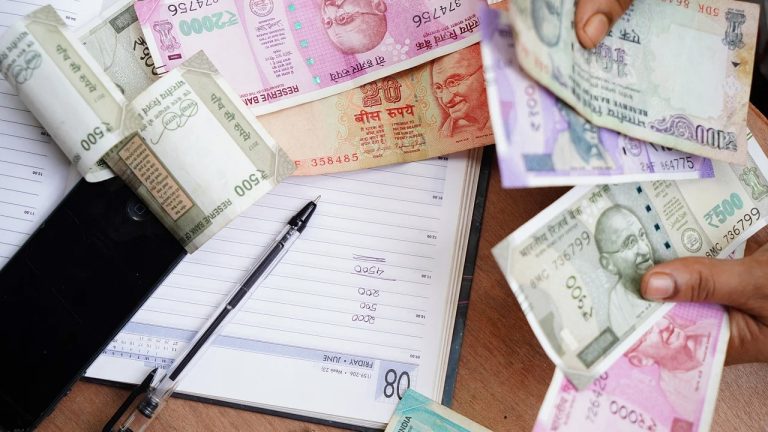Rajasthan chief minister Ashok Gehlot’s February 23, 2022 announcement restoring the old pension scheme for government employees appointed on or after January 1, 2004 benefiting more than 3 lakh such employees have, according to some observers, opened a Pandora’s Box.
The old pension scheme was done away with by the Atal Bihari Vajpayee government through an executive order in December 2003, replacing it with a new pension system for central government employees (other than defence personnel) joining service from January 1, 2004.
The Gehlot-government’s announcement not only created a buzz in other states but also became a subject of discussion across the country, especially in states where elections were either underway or due shortly.
Minus the political implications of Rajasthan government’s above decision, this article tries to look at the sequence of events and their implications on the Indian Pension System, without attempting to fix the responsibility for the present chaotic situation affecting a large number of government employees/retirees other than defence personnel.
In the interest of the social security of the affected citizens and their families, it is imperative that the government addresses all issues related to the New Pension System.
Before discussing the merits of the New Pension Scheme (NPS), let us take a bird’s eye view of NPS for central government employees and gradually introduced by state governments and public sector organisations, including banks. The circle was almost full when the “breaking news” came from Jaipur.
Also Read: 5 ways Artificial Intelligence is reshaping the BFSI sector : Alok Bansal
The central government employees who were in service as on 31 December 2003 have a Defined Benefit Pension Scheme. According to a 2008 estimate, the net present value of the pension liabilities of central government then being met on a “Pay-As-You-Go” basis was Rs3,35,628 crore (6th Pay Commission Report, 2008). Considering this staggering liability which grows proportionately along with the rise in inflation and periodical revisions in the government pay structure, a proposal to introduce a restructured defined contribution pension system —NPS—was mooted for new entrants to central government service. The NPS was introduced from 1 January 2004, for new entrants to central government service replacing the existing system. Thus, the NPS was born.
The scheme was compulsorily thrust upon the central government employees, who joined service, post-introduction of NPS. NPS, somewhat similar to retirement benefit schemes offered by mutual funds, has also been thrown open for subscription to the public, later, with some incentives from the Government of India. A salient feature which distinguishes it from mutual fund schemes is the attraction offered by the finance ministry that all subscribers registered in FY2010-11 were eligible for getting a contribution of Rs1,000 per year from the government for four years beginning the same year.
Not much research is needed to find that this was simply a back-door borrowing by government, as the matching contribution and the subscriptions will remain with NPS Trust for an unspecified period of time with no liability whatsoever to provide any return!
The Defined Contribution-based NPS has replaced the Defined Benefit-based Pension Scheme, and has been made compulsory for central government staff joining service from 1 January 2004.
Before the introduction of the New Pension Scheme, following the budget announcement of 2003-04 the major pension benefit schemes in operation, which were available for government and a section of the public sector employees, were:
- Government Pension Schemes administered by central and state governments, financed through budgetary provisions.
- General Provident Fund out of employees’ contributions which was open to government employees.
- Employees Provident Fund Scheme for employees in firms with more employees than a prescribed threshold level, as well as the Employees’ Pension Scheme, both envisaging contributions by employee and employer.
- Public Provident Fund maintained with State Bank of India, select post offices and other designated banks. This was open to all individuals.
- Annuity schemes marketed by insurance companies including LIC.
The salient features of the NPS at the time of introduction were:
- The system would be mandatory for all new recruits to the central government service from 1 January 2004 (except the armed forces in the first stage). The monthly contribution would be 10% of the salary and dearness allowance (DA) to be paid by the employee and matched by the central government. The contributions and investment returns would be deposited in the so-called Tier-I account, which cannot be withdrawn.
- Individuals can normally exit at or after age 60 for Tier-I. Upon exit, an individual will be required to invest 40% of the pension to purchase an annuity from an IRDA (Insurance Regulatory and Development Authority)-regulated life insurance company. In case of government employees, annuity should provide for pension for the lifetime of the employee and his dependents, which includes parents and spouse, at the time of retirement as well as receive a lump sum of the remaining pension wealth.
- The central government has paid 8% per annum interest on the balances credited to Tier-I accounts.
- Individuals may also have a voluntary Tier-II account, which can be withdrawn (either part or whole), as an option. This option is given as General Provident Fund (GPF) will be withdrawn for new recruits in Central Government service. These assets would be managed through the same procedure as the Tier-I account. This account does not constitute pension investment and would attract no special tax treatment.
- The beneficiaries of NPS will have the option to leave the pension system prior to age of retirement, in which case, the mandatory annuitisation would be 80% of the pension wealth.
- The NPS envisaged a central record keeping agency and several pension fund managers to offer three categories of schemes to government servants, namely, options A, B and C based on the ratio of investment in fixed income instruments and equities.
- The existing provisions of Defined Benefit Pension Scheme and General Provident Fund would not be available to those who join government service on or after 1 January 2004.
- An independent PFRDA (Pension Fund Regulatory and Development Authority) will regulate and develop the pension (investment) market.
- Over time, some improvements including a rise in employer’s contribution have been made, besides some efforts to professionalise fund management.
- Even after several years of existence, NPS has not achieved any significant progress in the private sector. Unfortunately, PFRDA, instead of going deep into the underlying reasons for non-acceptance of the scheme by the masses, reduced the problem as one of ‘marketing’ and made the terms for fund managers more attractive.
At the time of introduction of NPS, there was no thought in the minds of authorities on the arrangements for payment of compensation/family pension to the survivors of the NPS beneficiaries who died in harness. When several such cases came up, as an afterthought, in 2009, the Centre made some interim arrangements in this regard and decided to make provisional payment of family pension to such survivors under Rule 54 of the Central Civil Services (Pension) Rules, 1972. Such payments were subject to an undertaking to be furnished by the pensioner to refund or adjust the provisional payments… out of the final entitlements as sanctioned by the government at a future date. Such uncertainty and imposition of future liability is unheard of in the case of pension payment.
The stated objective of reducing the huge burden from Defined Benefit Pension Scheme by introduction of Defined Contribution Pension Scheme is not convincing as the financial burden is unlikely to come down for a long time. On the other hand, there will be substantial additional outgo towards employer’s contribution to NPS corpus.
It will be imperative for the government to address issues like family pension, reasonable return on pension funds and review the adequacy of the present 14% contribution from government and 10% from employees to ensure a post retirement lifestyle commensurate with what the employees are used to.
It does not require much calculation to observe that, in its existing form, the NPS will land the employees in a very disadvantageous position, by the time they retire, compared to their predecessors who enjoyed Defined Benefit Pension Scheme, as the government’s own estimates show a much larger outgo than the 10% contribution envisaged under NPS, for meeting the pension liabilities under the previous scheme.
From the employees’ side, a conscious effort to understand the scenario and factor in these concerns in their savings habits and also in future bargains of salary structure will be necessary.
The caution is in the context that, world over, remuneration packages have an integral ingredient towards costs on post-retirement life and employers are not averse to negotiating Cost-to-Company factoring this. Employees in government service in India have a mindset taking life time pension and family pension for granted and the mix of pre-2004 employees and NPS beneficiaries in service today create a conflict of interest of sorts today.
Study of Indian Pension System
Few years after introducing NPS, a team of experts from ING and IIM, Bangalore did a wonderful study of Indian Pension System and brought out a report in 2007. The results of the study were published in book form titled “Facing theFuture: Indian Pension Systems”(Published by Tata McGraw-Hill Publishing Company Limited, New Delhi). Unfortunately, the report didn’t get the attention it deserved.
The content of the book was the outcome of a joint effort between Indian Institute of Management Bangalore and ING. The book claimed to analyse the results of extensive market surveys, drawing from the experience of industry experts and study the different pension systems around the world. I quote from the introduction of the book:
“The book encourages thinking on the pension issues which will lead to viable solution to India’s problems”
The need of the hour is a thorough overhaul of the Indian Pension System. The ultimate solution may not be going back to the pre-2004 government pension system or going ahead with the hurriedly introduced NPS, but something in between.
Instead of leaving decisions to political manipulations, government need to start thinking professionally on such issues which have long term social and economic implications. Easiest option would be to start from the findings of the above 2007 study, which was broadly comprehensive and was undertaken by professionals with long years of experience.





















Add comment